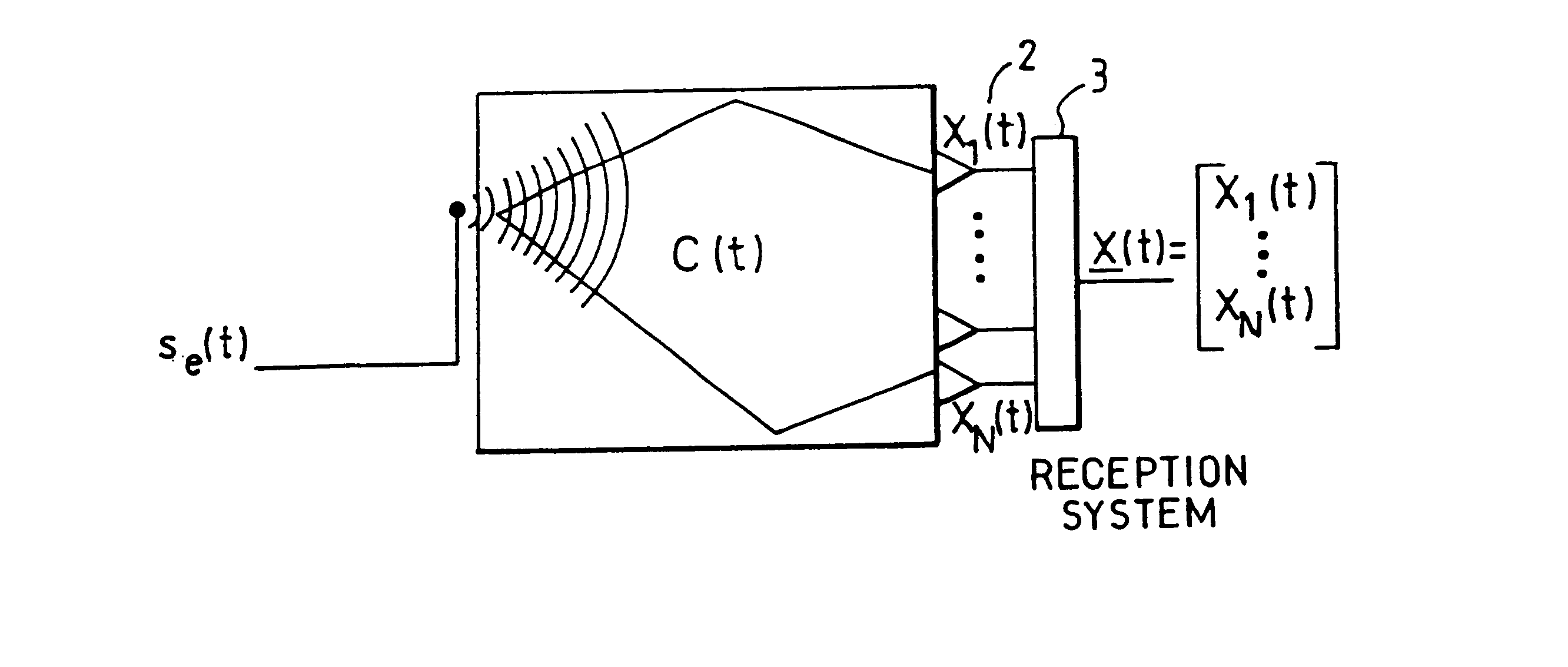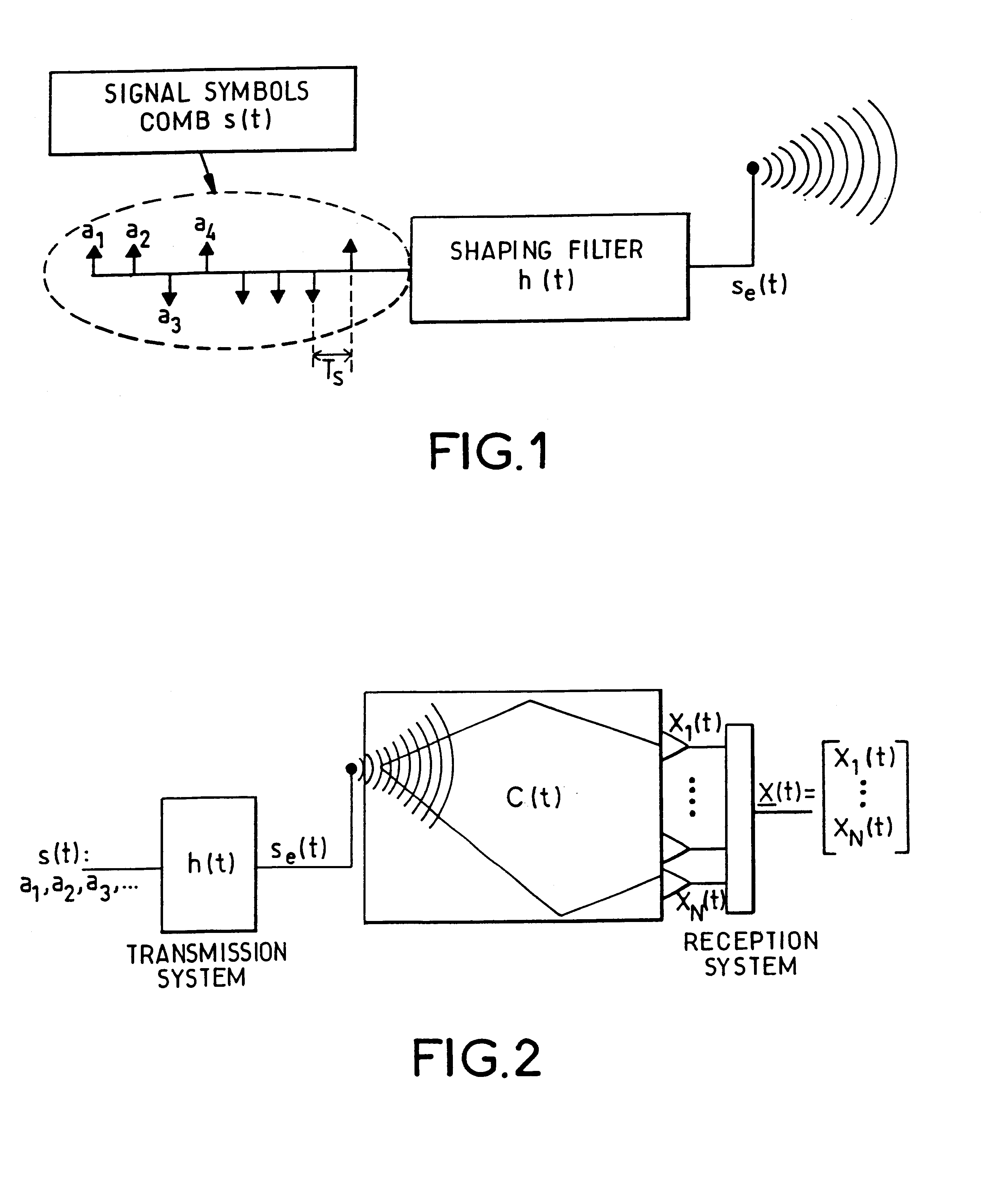Method and device for co-operative radio direction-finding in transmission
- Summary
- Abstract
- Description
- Claims
- Application Information
AI Technical Summary
Benefits of technology
Problems solved by technology
Method used
Image
Examples
examples of implementation
OF THE METHOD ACCORDING TO THE INVENTOIN
FIG. 11 shows the results obtained with two plane arrays of N=5 sensors, comprising one circular array with a radius of R=21.1 cm and one "V" shaped array . The azimuth .theta. is the incidence of a source in the plane of the array and the elevation angle .DELTA. is the incidence with respect to the perpendicular of the plane of the array. For the simulations in (.theta., .DELTA.), the direction-finding is done according to the parameters (u,v) which are the components of the wave vector of the source in the plane of the array. This components may be expressed in the form:
u=cos(.DELTA.) cos(.theta.) and v=cos(.DELTA.) sin(.theta.) (30)
The two arrays are adapted to the frequency range 900 MHz-1 GHz of the GSM. In the simulations, the center frequency is equal to f.sub.ant =900 Mhz and thus the wavelength is equal to .lambda.=c / f.sub.ant =33.33 cm.
The direction-finding performance characteristics will then be estimated, either with respect to th...
PUM
 Login to View More
Login to View More Abstract
Description
Claims
Application Information
 Login to View More
Login to View More - R&D
- Intellectual Property
- Life Sciences
- Materials
- Tech Scout
- Unparalleled Data Quality
- Higher Quality Content
- 60% Fewer Hallucinations
Browse by: Latest US Patents, China's latest patents, Technical Efficacy Thesaurus, Application Domain, Technology Topic, Popular Technical Reports.
© 2025 PatSnap. All rights reserved.Legal|Privacy policy|Modern Slavery Act Transparency Statement|Sitemap|About US| Contact US: help@patsnap.com



